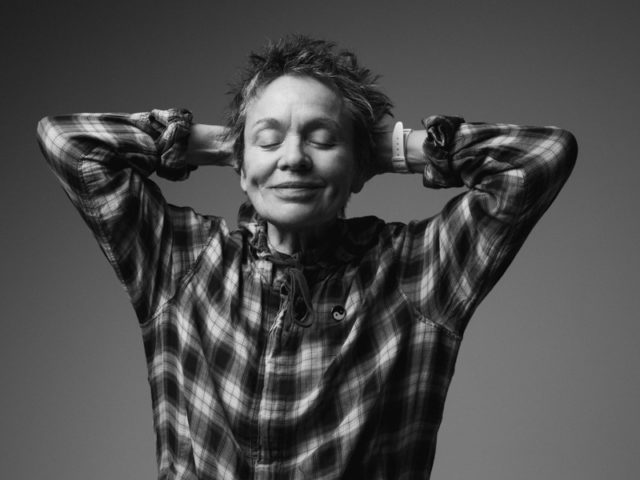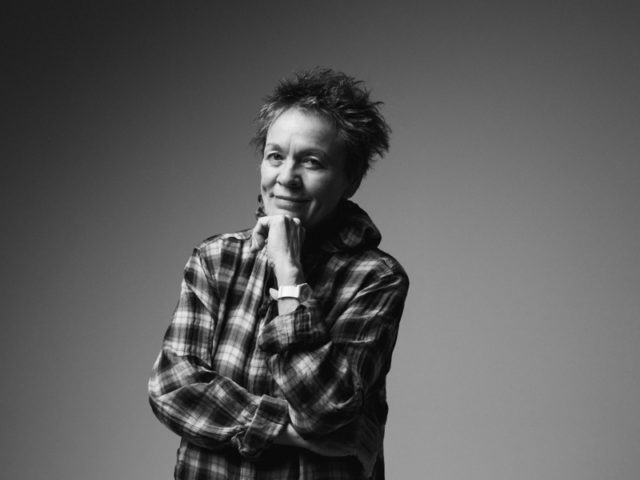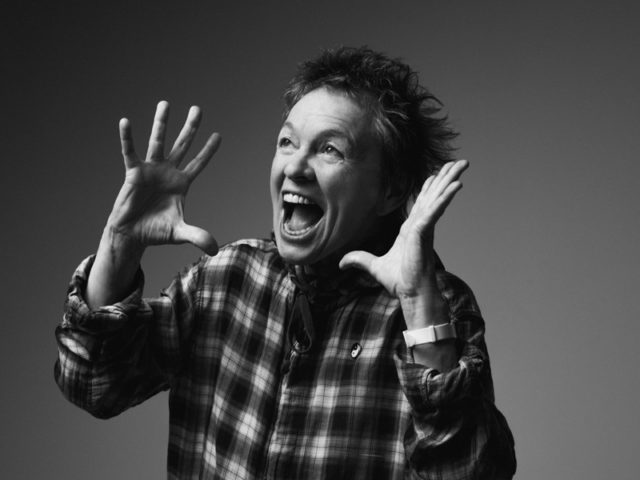


Laurie Anderson
In 2018, Laurie Anderson was the second artist invited by Anselm Kiefer to install a work at La Ribaute. Her interactive sculpture Handphone Table uses the viewer’s own body to conduct vibrations that are travelling through a wooden table from a concealed sound system – placing their elbows at particular points on the table top and cupping their hands round their ears, they can suddenly hear vibrations that are otherwise inaudible.
Letter from Laurie Anderson on her piece, Handphone Table, 1978:
I designed the table as the result of a frustrating evening trying to write a song on an electric typewriter. After typing several pages, I stopped to read what I had written. It was idiotic. I got very discouraged, put my head in my hands and just sat there. Suddenly I realized I was hearing an incredibly loud and low rumbling sound. When I took my hands away from my ears it was gone. I put my hands over my ears again and there it was. Suddenly I realized it was the sound of the typewriter that was making the surface of the table vibrate. This vibration was travelling up through my elbows and the bones of my arms and into my head. I thought, “That’s it! I’ll build a singing table.”
I built the table in the basement of the Museum of Modern Art in New York and it was shown there as part of their Projects series in 1978. The electronics for Handphone Table were designed by Bob Bielecki. Tape decks inside the table played low-frequency songs which were then amplified and fed through transducers. These tones were then pushed up metal shafts, which made contact with four points of the table surface. The listener placed his elbows on these points and his hands over his ears. The sound traveled through the pine and the porous bones of the arms and into the head. The difficult part was figuring out how to increase and shape the audio enough to travel easily through metal, wood and bones.
We used low frequency sounds because they travel more slowly and predictably and produce less leakage. The songs were scored for Fender Rhodes, acoustic piano, violin and voice. Sounds were panned from side to side and seemed to resonate in a different area—lower and more at the base of the head than with normal headphones. The difference between the pure organ notes and the same notes on the piano, which included ringing overtones and harmonics, became more apparent as the organ was heard in one ear, the piano in the other and then in opposite positions.
I really wanted to be able to make the table talk but words need a lot of treble to be distinct. Without the sharp percussive sounds of certain hard and high-pitched consonants, language is a kind of muffled sing-song humming. But it’s harder to compress and control treble which travels in a more skittish way. I made many experiments and was finally able to make the table talk. The first words I used were from George Herbert, a seventeenth-century English metaphysical love poet who wrote, “Now I in you without a body move.” The words alternated individually from the left ear to the right. The last word, “move,” panned very slowly through the center of the head from ear to ear.
In the end, I liked the way listening to the table, head in hands, was the same body posture as the moment of inspiration and depression that initiated the project. I recently redesigned the table, updating the electronics and am happy that it retains its eerie presence: a resonance that seems more remembered or imagined than heard.
For more on Laurie Anderson’s work:
Laurie Anderson